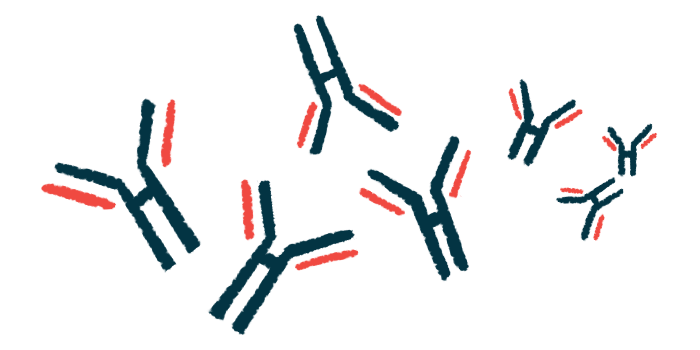Teen develops antibodies against Lumizyme after more than 11 years
Immune response against therapy emerges in boy with late onset Pompe disease
Written by |

After more than a decade on Lumizyme (alglucosidase alfa), a teenager with late-onset Pompe disease (LOPD) developed an immune response against the therapy, which led to a worsening of disease symptoms.
The patient was treated successfully with an immune-modulating therapy regimen that eliminated the aberrant immune response and helped stabilize symptoms while on treatment.
“This case illustrates the importance of continued surveillance of anti-[drug] antibodies and monitoring of biomarkers for Pompe disease patients on [Lumizyme] treatment,” researchers wrote in the report, “Development of high sustained anti-drug antibody titers and corresponding clinical decline in a late-onset Pompe disease patient after 11+ years on enzyme replacement therapy,” published in Molecular Genetics and Metabolism Reports.
Pompe disease is caused by deficiency of the enzyme acid alpha-glucosidase, which results in cellular buildup of glycogen, a sugar molecule. Lumizyme is an enzyme replacement therapy that works to provide a working version of this enzyme, which can help to slow disease progression. It’s sold by Sanofi, which was not involved in this study.
In some patients given enzyme replacement therapies, the immune system may mistake the therapy for an infectious threat. When this happens, immune cells make antibodies that will target the therapeutic enzyme, which can reduce the therapy’s effectiveness.
“The development of anti-drug antibody (ADA), the negative impact of ADA, and the success of immunomodulation therapy in [infantile Pompe disease] have been well recognized. In contrast, there is no clear consensus on the challenges of immunogenicity in LOPD,” the researchers wrote.
Here, scientists described the case of a LOPD patient who developed antibodies against Lumizyme after more than 11 years on the therapy.
Diagnosed as an infant
The patient had been diagnosed in the first months of life, but had not shown any signs of cardiomyopathy (heart disease) in the first year of life, which is the defining feature of classic infantile-onset Pompe. Genetic testing also confirmed the presence of mutations typically associated with LOPD.
The patient started on Lumizyme at age 20 months. The treatment was initially given according to the approved dosing schedule (20 mg/kg every other week). The therapy was tolerated well, and anti-drug antibodies were absent or at very low levels.
The child started to take independent steps at around 30 months, which is notably later than typical, with an abnormal gait. At age 40 months, the dosage of Lumizyme was doubled to 40 mg/kg every other week. The researchers noted that in the years since Lumizyme was first approved in 2006, “higher doses of [Lumizyme] have been proven to be well tolerated and can lead to improved clinical outcomes in some Pompe disease patients.”
By age 10, the child was continuing to experience persistent muscle weakness, and so the dosage was further increased to 40 mg/kg weekly. At age 12, the patient underwent a surgery to help manage scoliosis (curvature of the spine).
Rise in levels of antibodies against Lumizyme
Just before the patient turned 14, laboratory tests started showing a steady rise in levels of antibodies against Lumizyme. Levels of urinary Glc4, a biomarker of accumulated glycogen, also increased at this time.
In the year that followed, the teenager experienced notable worsening of muscle weakness and balance, which caused noticeable difficulty with activities like walking and climbing stairs. Measures of lung function also showed a notable decline.
Around age 15, the patient was given immunomodulatory therapy according to a previously-established protocol. The general idea behind this type of therapy is to give treatment with medications that reset a patient’s immune system, so that it no longer perceives enzyme replacement therapy as a threat.
With two courses of immunomodulatory therapies, levels of anti-drug antibodies and urinary Glc4 dropped, and they have remained low out to the most recent follow-up. Since these therapies substantially weaken the immune system, the patient also was given preventive therapies to reduce the risk of infection, which were tapered gradually as the immune system recovered.
By age 18, the patient’s immune system was functioning normally, and the patient says his physical function is similar to, if not slightly better than, it was before the anti-drug antibodies were detected.
Overall, this case highlights the importance of regularly testing for anti-drug antibodies in patients given enzyme replacement therapies so that appropriate immune-modulating treatments can be given as soon as they are needed, the researchers noted.
The team also stressed a need for more research to understand why some patients develop antibodies against these therapies, which remains largely unknown.






